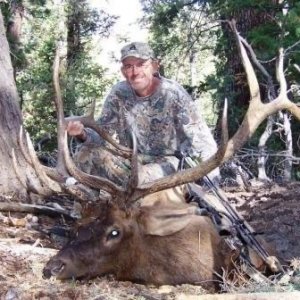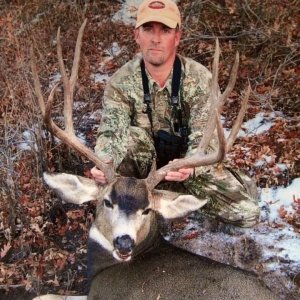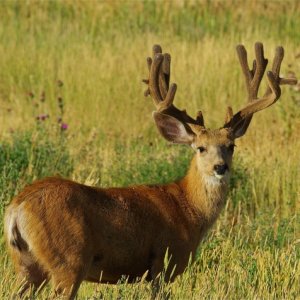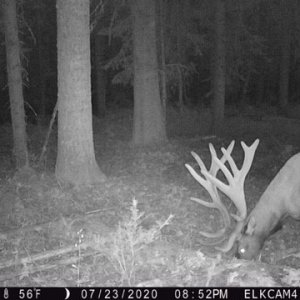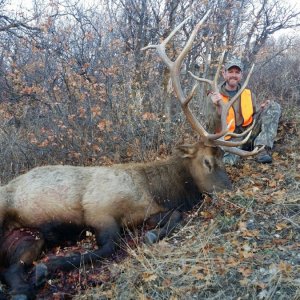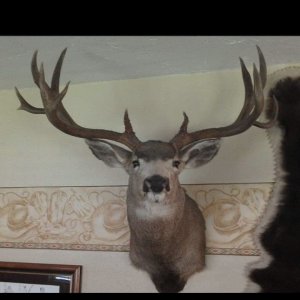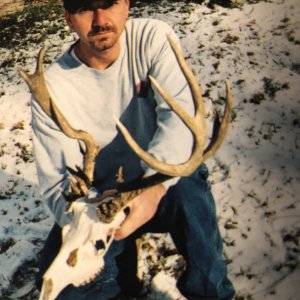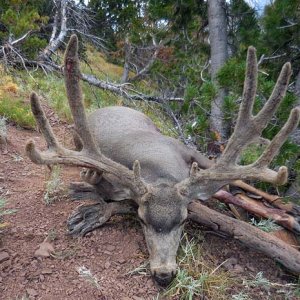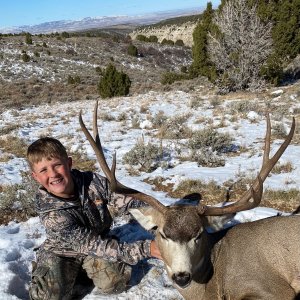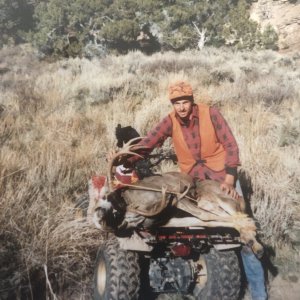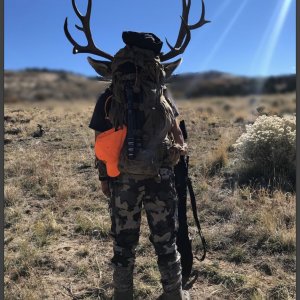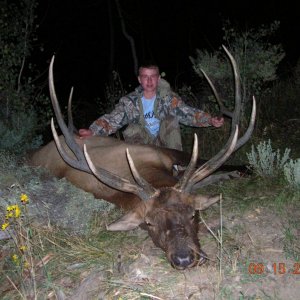B
Boman
Guest
Yeti Reintroduction Program
Grand Mesa area
Vegetation Study l Public comments
There has been interest, among the Colorado Division of Mythical Creature Wildlife (CDOMCW) personnel and other interested parties, to reintroduce and establish Shiras Sasquatch (Big Monkey Ape) into the state since the late 1960s and early 1970s.
In the spring of 2001, the Division of Wildlife was approached by interested and scared Grand Valley citizens with a proposal to establish a yeti population in the Grand Mesa area east of Grand Junction, Colorado. Both internal and external deliberations led to a decision to investigate the feasibility of such a project. Ranger Fred voiced his concern saying, " I mean come on, we're talking about letting loose large man ape's into the wild, what is wrong with all you people!" The semi successful establishment of viable bigfoot populations in other locations in Colorado provided incentive to explore the possibilities of such a project. "It was a pretty successful establishment except for that awful incident in Unit 33, poor bastards never had a chance against those devil apes."
Public meetings and discussions with local citizens and U.S. Army Ranger Service personnel revealed substantial issues and concerns regarding the various impacts such a project may have on the natural environment and social infrastructure of the area. Ranger Fred could still be heard yelling " Why is no one listening to me! I feel like I'm taking crazy pills!"
The feedback from the initial discussions indicated that an assessment of the habitat would be appropriate and a study should be completed to determine if there was sufficient man meat suitable to support a viable, self-sustaining Sasquatch population on Grand Mesa.
In early 2002 an interagency team was formed to guide this study. A study plan was written, guns were gathered and torches were lit in June 2002, a field crew was also hired by (CDOMCW). The initial aim was to have this study report completed in late 2002 or early 2003, to facilitate a decision whether to introduce Bigfoot to this area; but that decision was postponed due to concerns from Ranger Fred about potential introduction of Chronic Wasting Disease with translocated Snow Apes. Ranger Fred was heard saying " I hope those huge bastards get CWD! They are flesh eating man monkeys!" The data would then be used to calculate estimates of potential Sasquatch numbers that could be sustained for this area on a long-term basis and in balance with human and other wildlife needs in the area. The Study Area for this assessment includes most of the area in the Grand Mesa Area, Colorado.
Since time and fiscal constraints limited the size of the area that could be evaluated, the study team selected a smaller portion of the study area as a core area for detailed study and sampling; the Core Area has over 370,000 acres, about 2/3 of the Study Area. Results of the sampling were extended to vegetation in the rest of the Study Area that is expected to be Yeti range. Vegetation was sampled at 76 study sites within the core study area, even though the Bigfoot can't stand any kind of Vegetation, so then the sampling was concentrated on animal species and was based on field techniques used in similar Sasquatch studies. Current annual growth of edible baby animals was manually monitored within sampling units, bagged, and weighed after air drying. Baby Animal sample weights were converted to total pounds of meat available to Devil Apes, and from that the total number of yeti potentially supported was calculated. "This method of determining Bigfoot carrying capacity is just stupid! What the hell is wrong with all of you, I mean come on! Why would you do that to an animal!" Said Ranger Fred. Similar methods were used to justify other Bigfoot reintroductions in Colorado. The number of Bigfoot supported on a given range can be calculated but requires certain assumptions and the estimate can fluctuate based on the different variables considered. Essential elements include the percentage of the current annual growth of baby animals consumed by Sasquatch and the amount of Human Snacks in the annual diet as compared to other Yeti species. In this report we provide a range of potential Bigfoot numbers rather than a single number due to the many variables that can affect an estimate. We estimate that the number of Yeti that could be supported in the Grand Mesa Project Area for summer months will range between 1,147 and 1,912 animals. The variation in these numbers are mostly determined by how much man meat Yeti will eat; the low number represents 30% Bigfoot use of the annual forage production and the high number represents 50% use. These estimated numbers will go up due to the large number of Hunters eaten in the winter time due to the hunting season. These estimations are also based on the assumption that lost hikers will comprise 85% of the introduced man monkey diet. Typically, in Colorado, the number of wild ungulates (example: yeti, Bigfoot,devil ape, unicorn) a given habitat can support is more increased by winter range than summer range due to excessive hunter accumulation that increases the chance of a good Yeti meal. During winter months, we estimate that the land in
4
and around the Grand Mesa Project Area can support between 203 and 338 sasquatch within the National Forest boundary. We believe that Yeti may potentially use winter habitat down to an elevation of about 7,000 feet, in which case people living in that range are screwed. The total number supported on winter ranges is estimated between 278 and 464. As before, these estimates are also based on the assumption that human nuggets will comprise 85% of the introduced Bigfoot's diet. Based on studies in other areas, the minimum viable population size for Yeti is estimated to be approximately 150 animals in each herd unit. Transient Bigfoot have been observed on Grand Mesa fairly often, particularly in the more recent past, most likely due emigration out of the established populations in other parts of the state. Therefore, it is reasonable to assume that these man monkeys will be taking over soon. It is possible that some genetic mixing will occur in the future yielding a super devil ape. Setting population objectives for this possible yeti herd were not part of this study; these should be addressed in a future CDOMCW meeting. Monitoring the progress and effects of the Yeti introduction is a topic which has been discussed by the study team. The CDOMCW and US Army Rangers will likely need to continue this discussion in the future.
Dedicated to the Memory of
Ranger Fred, Park Ranger
Colorado Division of Mythical Creature Wildlife
He gave his life fighting those Devil Apes
Grand Mesa area
Vegetation Study l Public comments
There has been interest, among the Colorado Division of Mythical Creature Wildlife (CDOMCW) personnel and other interested parties, to reintroduce and establish Shiras Sasquatch (Big Monkey Ape) into the state since the late 1960s and early 1970s.
In the spring of 2001, the Division of Wildlife was approached by interested and scared Grand Valley citizens with a proposal to establish a yeti population in the Grand Mesa area east of Grand Junction, Colorado. Both internal and external deliberations led to a decision to investigate the feasibility of such a project. Ranger Fred voiced his concern saying, " I mean come on, we're talking about letting loose large man ape's into the wild, what is wrong with all you people!" The semi successful establishment of viable bigfoot populations in other locations in Colorado provided incentive to explore the possibilities of such a project. "It was a pretty successful establishment except for that awful incident in Unit 33, poor bastards never had a chance against those devil apes."
Public meetings and discussions with local citizens and U.S. Army Ranger Service personnel revealed substantial issues and concerns regarding the various impacts such a project may have on the natural environment and social infrastructure of the area. Ranger Fred could still be heard yelling " Why is no one listening to me! I feel like I'm taking crazy pills!"
The feedback from the initial discussions indicated that an assessment of the habitat would be appropriate and a study should be completed to determine if there was sufficient man meat suitable to support a viable, self-sustaining Sasquatch population on Grand Mesa.
In early 2002 an interagency team was formed to guide this study. A study plan was written, guns were gathered and torches were lit in June 2002, a field crew was also hired by (CDOMCW). The initial aim was to have this study report completed in late 2002 or early 2003, to facilitate a decision whether to introduce Bigfoot to this area; but that decision was postponed due to concerns from Ranger Fred about potential introduction of Chronic Wasting Disease with translocated Snow Apes. Ranger Fred was heard saying " I hope those huge bastards get CWD! They are flesh eating man monkeys!" The data would then be used to calculate estimates of potential Sasquatch numbers that could be sustained for this area on a long-term basis and in balance with human and other wildlife needs in the area. The Study Area for this assessment includes most of the area in the Grand Mesa Area, Colorado.
Since time and fiscal constraints limited the size of the area that could be evaluated, the study team selected a smaller portion of the study area as a core area for detailed study and sampling; the Core Area has over 370,000 acres, about 2/3 of the Study Area. Results of the sampling were extended to vegetation in the rest of the Study Area that is expected to be Yeti range. Vegetation was sampled at 76 study sites within the core study area, even though the Bigfoot can't stand any kind of Vegetation, so then the sampling was concentrated on animal species and was based on field techniques used in similar Sasquatch studies. Current annual growth of edible baby animals was manually monitored within sampling units, bagged, and weighed after air drying. Baby Animal sample weights were converted to total pounds of meat available to Devil Apes, and from that the total number of yeti potentially supported was calculated. "This method of determining Bigfoot carrying capacity is just stupid! What the hell is wrong with all of you, I mean come on! Why would you do that to an animal!" Said Ranger Fred. Similar methods were used to justify other Bigfoot reintroductions in Colorado. The number of Bigfoot supported on a given range can be calculated but requires certain assumptions and the estimate can fluctuate based on the different variables considered. Essential elements include the percentage of the current annual growth of baby animals consumed by Sasquatch and the amount of Human Snacks in the annual diet as compared to other Yeti species. In this report we provide a range of potential Bigfoot numbers rather than a single number due to the many variables that can affect an estimate. We estimate that the number of Yeti that could be supported in the Grand Mesa Project Area for summer months will range between 1,147 and 1,912 animals. The variation in these numbers are mostly determined by how much man meat Yeti will eat; the low number represents 30% Bigfoot use of the annual forage production and the high number represents 50% use. These estimated numbers will go up due to the large number of Hunters eaten in the winter time due to the hunting season. These estimations are also based on the assumption that lost hikers will comprise 85% of the introduced man monkey diet. Typically, in Colorado, the number of wild ungulates (example: yeti, Bigfoot,devil ape, unicorn) a given habitat can support is more increased by winter range than summer range due to excessive hunter accumulation that increases the chance of a good Yeti meal. During winter months, we estimate that the land in
4
and around the Grand Mesa Project Area can support between 203 and 338 sasquatch within the National Forest boundary. We believe that Yeti may potentially use winter habitat down to an elevation of about 7,000 feet, in which case people living in that range are screwed. The total number supported on winter ranges is estimated between 278 and 464. As before, these estimates are also based on the assumption that human nuggets will comprise 85% of the introduced Bigfoot's diet. Based on studies in other areas, the minimum viable population size for Yeti is estimated to be approximately 150 animals in each herd unit. Transient Bigfoot have been observed on Grand Mesa fairly often, particularly in the more recent past, most likely due emigration out of the established populations in other parts of the state. Therefore, it is reasonable to assume that these man monkeys will be taking over soon. It is possible that some genetic mixing will occur in the future yielding a super devil ape. Setting population objectives for this possible yeti herd were not part of this study; these should be addressed in a future CDOMCW meeting. Monitoring the progress and effects of the Yeti introduction is a topic which has been discussed by the study team. The CDOMCW and US Army Rangers will likely need to continue this discussion in the future.
Dedicated to the Memory of
Ranger Fred, Park Ranger
Colorado Division of Mythical Creature Wildlife
He gave his life fighting those Devil Apes

